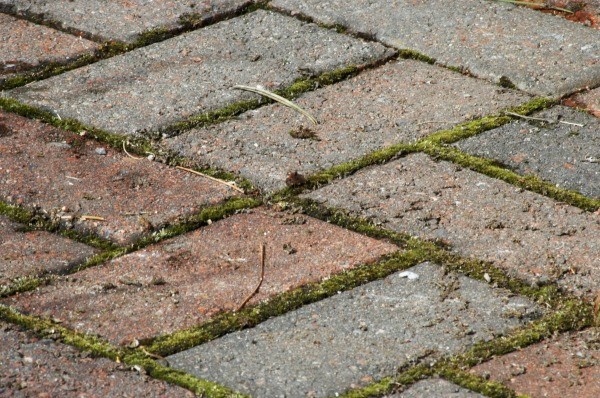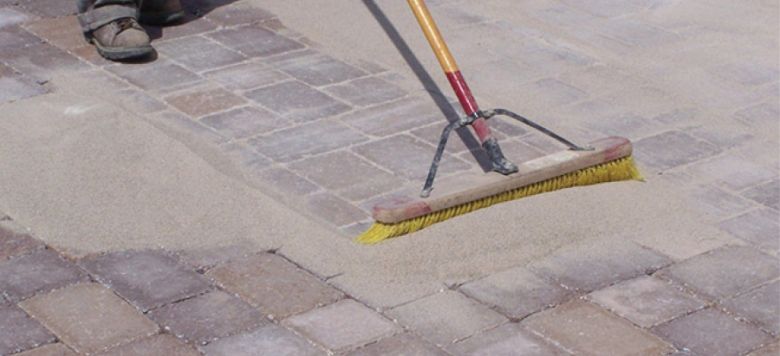
Do you have or are considering installing interlocking pavers for a landscaping project in Victoria BC? They are likely to be more far more maintenance free than whatever surface was there previous. However, to keep your pavers in good shape and looking healthy, here are some simple maintenance techniques that you can do without a landscaper.
De-weeding
If it’s minor, a spray bottle filled with a solution should be used to spot treat small weeds growing in the pavers. Use a solution that is 1/3 dish soap, 1/3 vinegar, 1/3 water. Spray generously. You want to soak the roots in this solution long enough that it will destroy the root cells and thus starve the entire plant.

If the weeds are well established, you will need to dig up the roots. To do this without lifting or moving the pavers, you can use a little hook knife. The idea is to shred a root system that has had time to establish itself. You will likely dig out a lot of organic material that’s essentially soil transported via wind. It is advisable to refill with paver joint sand. This can be purchased at a landscaping store.
Power-Washing and Joint Sand
Power washing is not just for the surface of the pavers. While it’s great for getting rid of years of dirt and grime that has built up on the surface of the pavers, it’s also great for cleaning the joints between the bricks. You will want to use it to blast out the mix of dirt and sand that has accumulated in the joints over time. If there is insufficient organic material in the joints, then there are no nutrients for weeds to grow from. Proper power washing should result in lots of empty crevices in the joints. This must be refilled with joint sand. Polymeric sand is not necessary as we explained here in another article. Proper technique for applying the joint sand is also covered in that article. If you require assistance or lack the tools or time to do this yourself, let us know as it’s something we do at Triton Landscaping.
Re-setting Pavers
Sometimes parts may sink or bulge up due to erosion, roots, run off, settling, etc. The great advantage of interlocking pavers over any other paved surface is that you don’t have to rip up everything and spend thousands repairing it. If you do it yourself, all it takes is under $100 of gravel and sand, plus a plate compactor. If you hire a landscaper to do it, the cost is still far less compared to replacing an entire concrete slab and you shouldn’t have to throw out any of the pavers either. For sunken or bulging pavers, you will want to pull up the affected pavers, get rid of the base material which likely has been mixed and is no longer ideal. New gravel should be brought in, graded, and compacted, then sand on top of that. The pavers that were removed can then be put back in. Paver repair is also something we do at Triton Landscaping should you decide that it’s not in your schedule to do it. Once the pavers are put back in, joint sand should be applied, and the surface compacted with a plate compactor.

That’s It
There’s really not much to do besides these things. The frequency of these maintenance tasks should be on a need to need basis. Pavers generally should not sink or shift or bulge up for years and years.